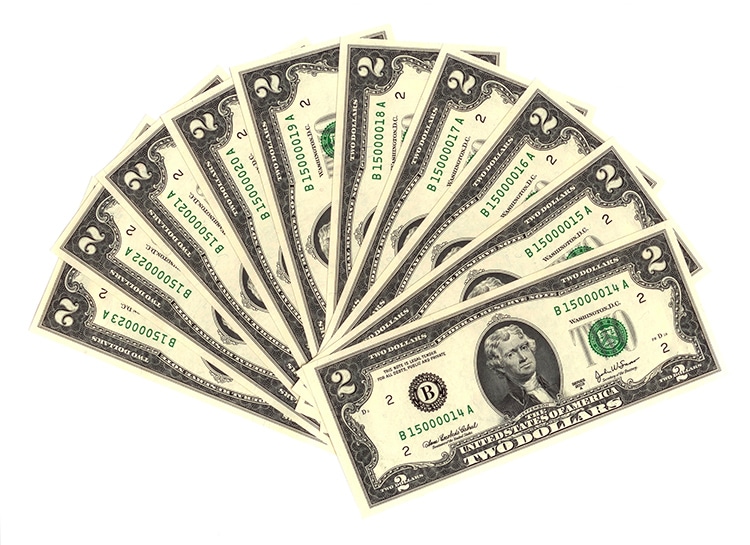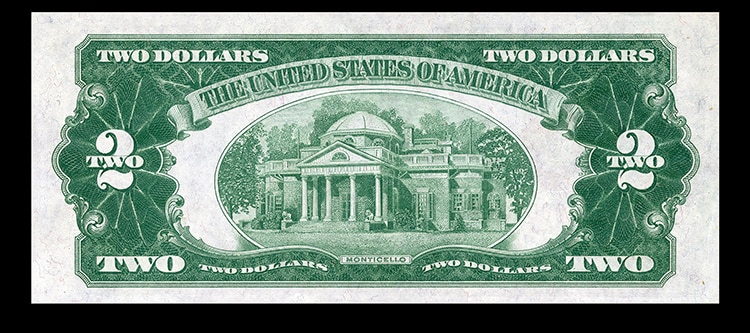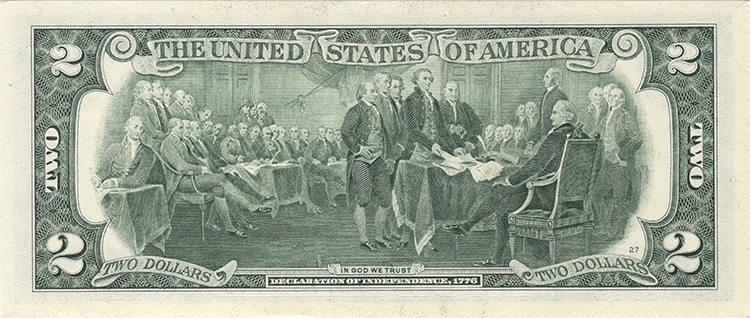
Photo: Vkraskouski/ Depositphotos
When it comes to currency, what you see is usually what you get. So a $1 bill is worth $1, a $5 bill is worth $5, and so on. However, in the case of the rare $2 bill, the worth of the banknote rises with lower circulation. In fact, $2 bills from the 19th century have fetched exponentially more, as collectors will pay up to $4,500, according to auction houses such as U.S. Currency Auctions and Heritage Auctions. In 2013, Heritage Auctions sold a 1928 $2 bill for $88,000. Recently, the sale of a $2 bill for $4,000 through Heritage Auctions went viral. As a result, the $2 notes have gotten a boost in popularity.
Every iteration of American currency has featured a $2 denomination. The $2 Continental bill was first printed nine days before the country was officially founded. Then the first United States notes, or legal tender notes, were printed in 1862 to raise money for the Civil War. Two-dollar bills remained unpopular for most of their history, only getting a boost during World War II. In fear of Axis powers using Mexico as a place to sell American dollars stolen in Europe, Mexico and the United States banned U.S. money from crossing the border. However, since there was such a large population crossing the border and interchangeably using pesos and dollars, the nations did not ban $2 bills. Their lack of historical use meant it was unlikely for them to have been found in European loot, but were handy for those who were frequently exchanging dollars for pesos.
By 1966, the $2 bill had returned to its original place as the least used paper denomination and the treasury announced they had stopped printing. On account of this, people to this day think the $2 bill is either still not in print or even out of circulation completely. However, in order to celebrate the nation’s bicentennial in 1976, the treasury started printing $2 bills again.
The bill has featured Thomas Jefferson since 1928, having previously featured other figures such as Alexander Hamilton. On the back, Jefferson’s home Monticello was featured until printing was paused in 1966. Since 1976 they have featured John Trumbull’s famous painting aptly entitled Declaration of Independence.
No matter the imagery, $2 bills have always circulated in the United States. While we tend to overlook them, it’s noteworthy that they have played an important role in three of the most pivotal American war efforts. Keep your eye out for the bills and you may make yourself a tidy sum, or at least have bus fare home.
From 1928 to 1966, $2 bills featured Monticello on the back.

Photo: Wikimedia Commons (Public domain)
Now, since 1976, you can see John Trumbull's Declaration of Independence.

Photo: Wikimedia Commons (Public domain)
h/t: [NBCLA]
Related Articles:
Trailblazing Actress Anna May Wong Becomes the First Asian American to Appear on U.S. Currency
Rare $10,000 Bill Sells for Almost Half a Million Dollars at Auction
Canada Has “Star Trek” Coins That Can Actually Be Used as Currency






















































































